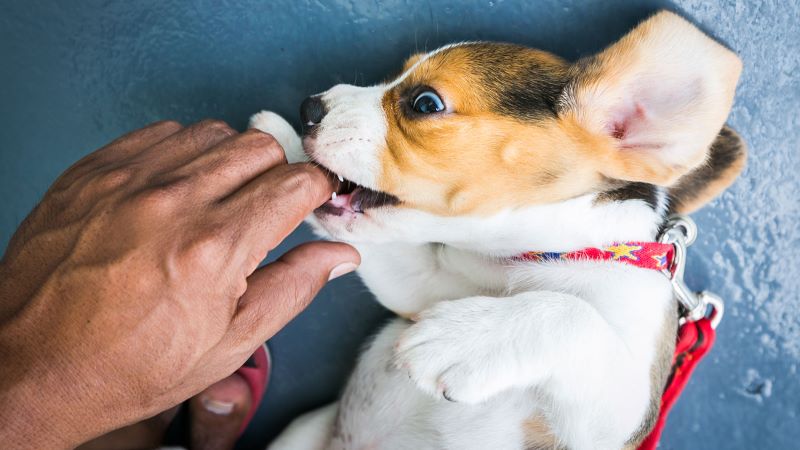I peered from my kitchen into the den to see my youngest child, sitting on the floor, cheek to cheek with his dog cousin, petting him and talking to him in a low voice. I felt completely comfortable with my son talking to this four-legged friend and being down on the floor that close to his face. But that is because I know my sister’s dog’s disposition. I’ve known him since he was a tiny little puppy.
But I do not know the temperament of all the dogs we come into contact in a given day. We see dogs in our neighborhood on walks, dogs at the airport, and here recently I have noticed a trend toward dogs at the grocery stores and in malls! It seems service dogs are more prevalent than ever before, and it feels important to brush up on some do’s and don’ts when it comes to interacting with dogs we do not know. So in honor of National Dog Bite Prevention Week, celebrated the third full week in May, I have compiled a list below.
DO ask whether it is okay for you to pet a dog, especially if the dog is a service or therapy dog. It is impossible to know if a dog is friendly just by observing him on his leash, so check with the owner first before reaching out to the dog. When encountering a dog who is at work, be respectful of the situation. Service dogs are not allowed to play, so you might consider giving the dog and his owner a wide berth. If your own dog is with you, move him to the other side of you, and make sure you have good control.
DO let the dog come to you, if you are granted permission by the owner to react with the dog. Then, let him sniff your closed hand. If that goes well, pet his chest and his shoulders. Jonathan P. Klein, an LA-based certified dog trainer, says it is best not to pet the top of a dog’s head because this can seem threatening to a dog. The dog may feel as if you are reaching over his eyes and blocking his view which may scare him.
DON’T go near an angry dog. You likely have no idea why that dog is growling and upset, and it is best to avoid eye contact and walk away. Do not run or scream, as you may startle the dog and encourage him to chase you.
DON’T touch a dog who is eating, sleeping, or chewing a toy. In other words, let sleeping dogs lie. Dogs who are spooked are more likely to bite, and some dogs are protective over their food, and may feel threatened if you approach during mealtime.
Of course, you can do your own part to make sure your dog does not bite. Properly socialize and train your dog at a young age, keep him on a leash and follow dog walking etiquette when on walks, and avoid situations that may put unnecessary stress on your dog, especially if he is prone to anxiety.

